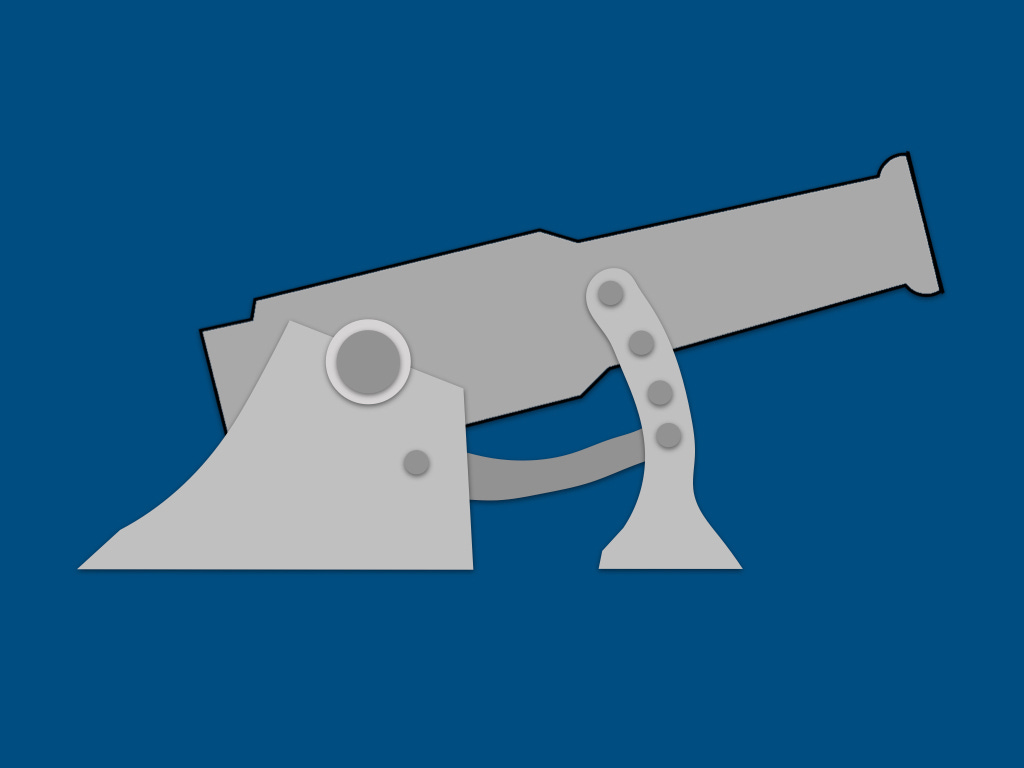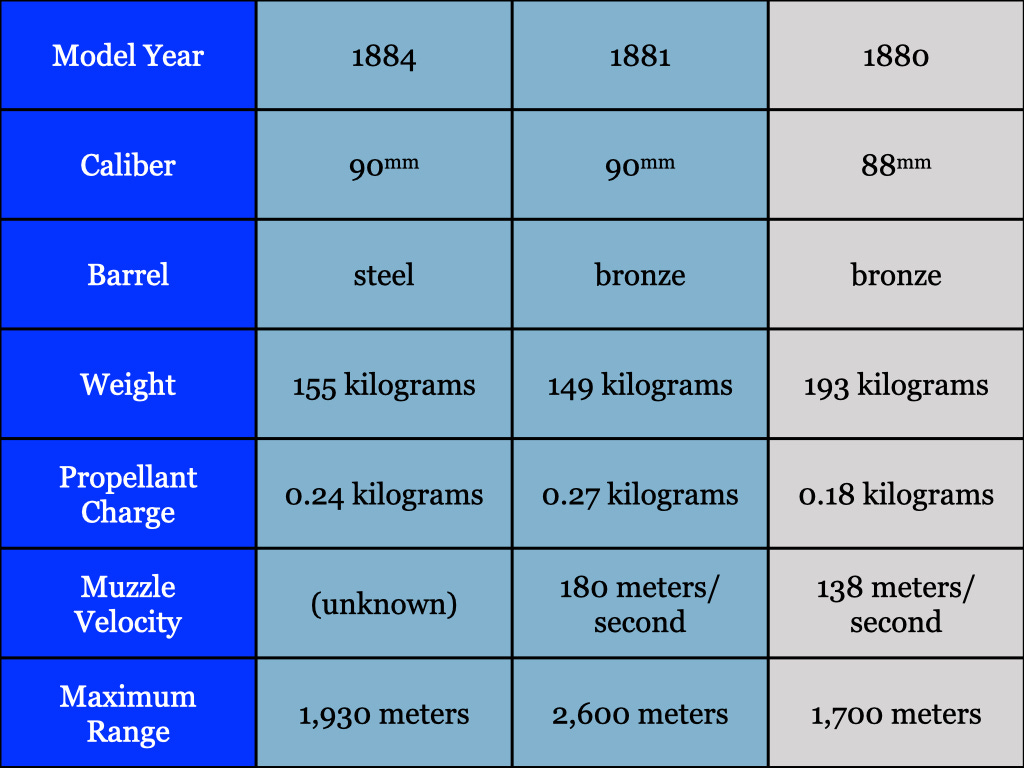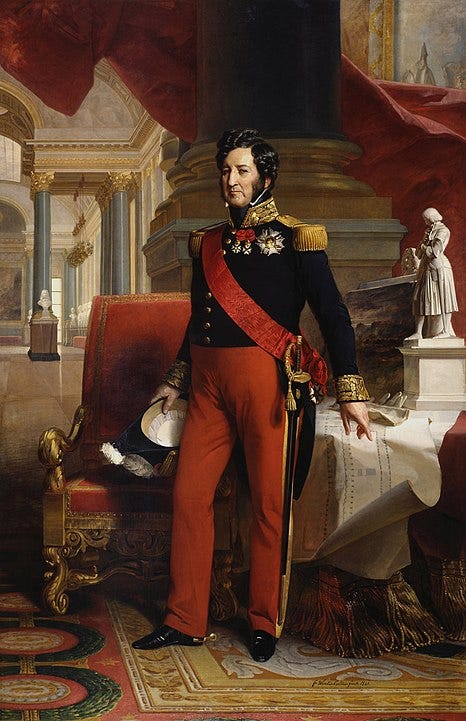In 1880, Charles Ragon de Bange (1833-1914), already famous as a designer of both artillery pieces and projectiles, invented a rifled mortar capable of firing the same shells as the 90mm field gun adopted by the French Army in 1877. With a bronze barrel resting on a steel framework, this weapon bore a close resemblance to the prototypes of a 9 centimeter mortar that the Prussian Army had recently begun to test.
One of the few obvious differences between the two pieces lay in their breech mechanisms. While the Prussian mortar was loaded by means of a device designed by engineers working for the Krupp concern, the French mortar was fitted with a breech mechanism similar to the one that Colonel de Bange had patented in 1875.
The two mortars also differed in their arrangements for the elevation of the barrel. Where the Prussian piece used a geared wheel to offer a large number of possible elevations, the de Bange design employed a “discontinuous” system that gave the gunner a choice of four basic settings. (These corresponded to the following elevations: 9 degrees, 20 degrees, 32 degrees, and 65 degrees. To select a different elevation, the gunner used a second device that allowed each setting to be refined by as much as 12 degrees.)
In 1881, artillerists at the proving grounds at Calais tested two prototypes of the de Bange mortar. While the new weapon proved far more accurate than the 150mm smoothbore mortars then in use, the bronze barrels could not tolerate the stress of firing. Thus, de Bange returned to the drawing board, producing a design for a 90mm rifled mortar with a steel barrel that, in 1883, yielded a prototype.
In tests conducted at the Calais proving ground the second mortar proved worthy of the other steel-tubed weapons designed by Colonel de Bange. That is, it displayed enviable degrees of accuracy, reliability, and ease of use. However, in the absence of either a constituency or a champion for a weapon of this type, no one the took the trouble to conduct further trials. Thus, in 1914, when French soldiers at the front looked for a means of combatting German Minenwerfer, the arsenals of the Third Republic had nothing better to offer them than smoothbore bronze mortars that dated from the reign of the last king of France, Louis Philipe.
Source: Jules Challéat, L'artillerie de terre en France pendant un siècle : histoire technique (1816-1919): Tome II, 1880-1910 (Paris: Charles-Lavauzelle, 1935) pages 84-88









Sorry to be pedantic, but I’m pretty sure King Louis-Philippe styled himself King of the French (roi des français) and not King of France (roi de France). Blood was more than once spilled over such minutiae.